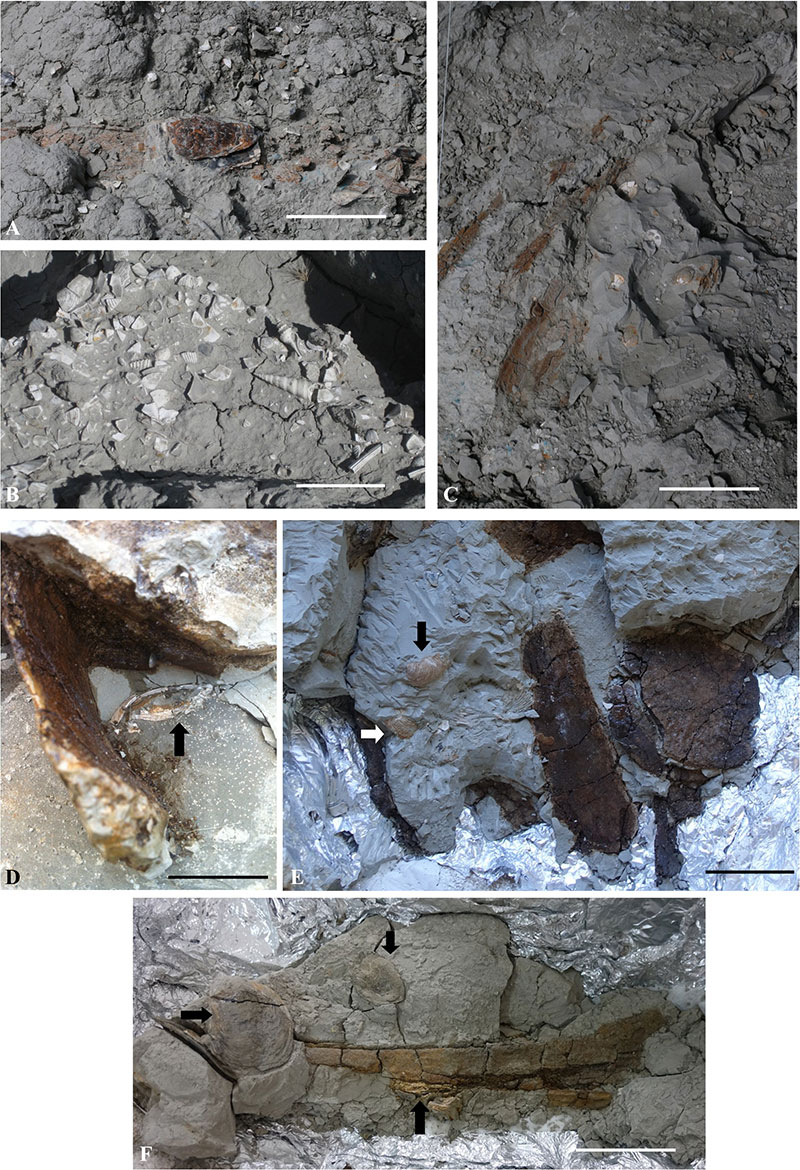FIGURE 1. Simplified geological sketch (A) of the Allerona area with location of Bargiano site and Montemoro quarries and (B) paleogeographic reconstruction of the area (modified from Baldanza et al., 2018).
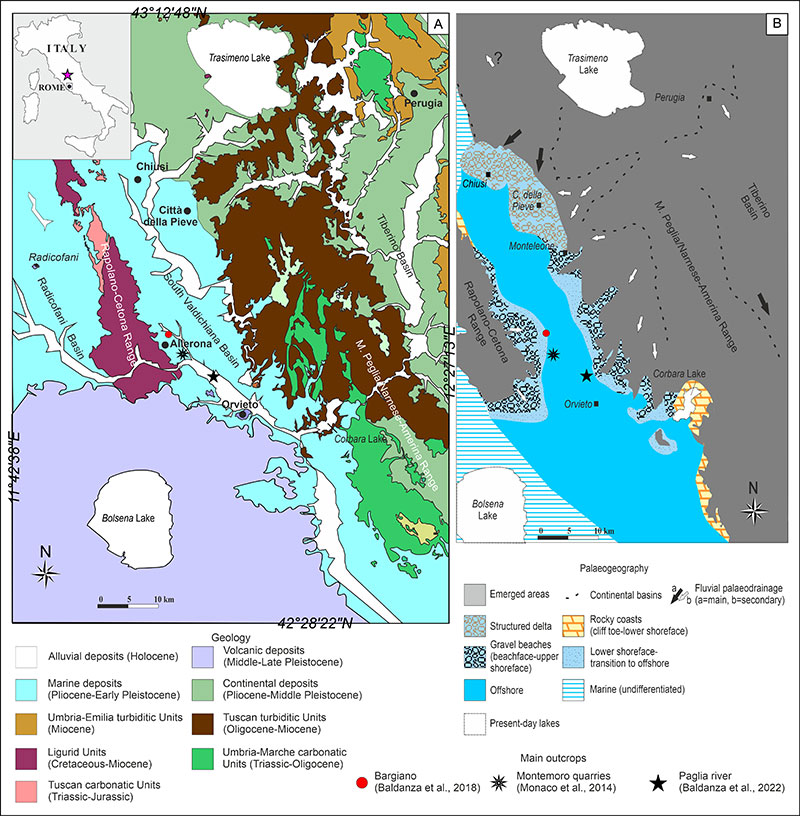
FIGURE 2. Stratigraphic and sedimentological logs of Montemoro and Bargiano sites in the Allerona area (modified from Baldanza et al., 2018). To note that the scale of two sites is different: the Bargiano site was enlarged and detailed to best appreciate the succession of WFEs and the assemblages found.

FIGURE 3. Decapod crustacean of Bargiano: A) Jaxea nocturna MUAL 45, (near the vertebrae); B) J. nocturna MUAL 35, (near the skull bones); C) Goneplax rhomboides MUAL 31, (near the skull bones); D) Astenognatus alleronensis, MUAL 42, the carapace (within the whale vertebrae); E) Chlinocephalus demissifrons MUAL 32, in situ near the occipital whale bone (the red chisel bottom right is about 20 cm) and F) MUAL 32, close up of the specimen. Scale bars: 1 cm
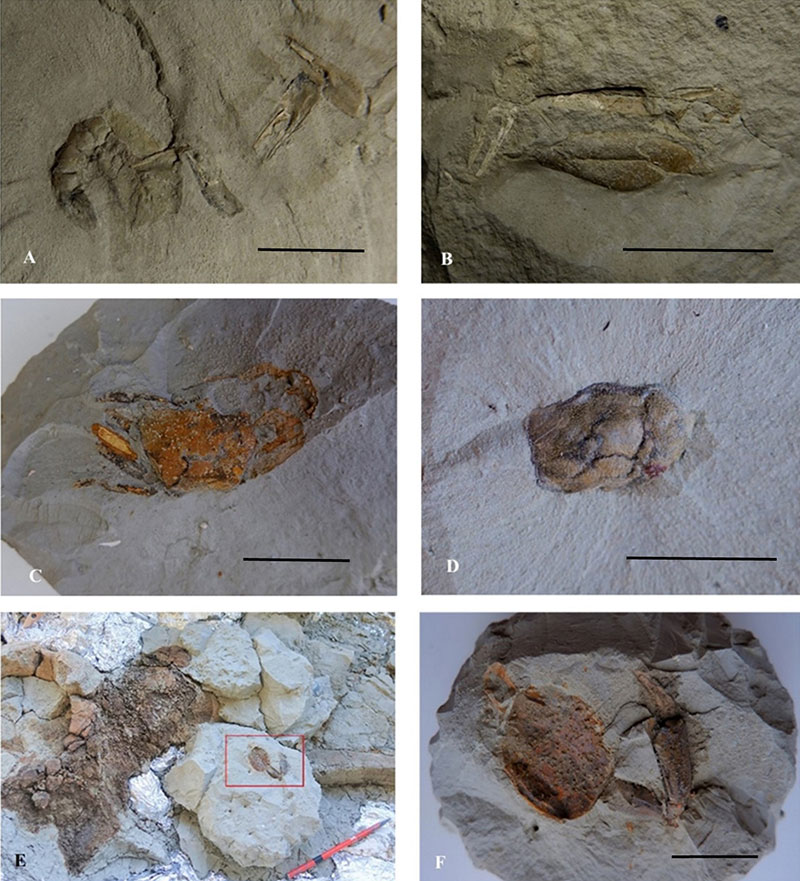
FIGURE 4. Echinoids of Bargiano site: A) Ova canalifera, aboral view, MUAL 50; B) O. canalifera oral view, MUAL 51; C) O. canalifera, aboral view (MUAL 52) of best preserved specimen; D) Ova canalifera, oral view, MUAL 53; E) transversal section of O. canalifera, with two pores encircled (MUAL 54). The original silhouette of this irregular echinoid is partially destroyed, but the morphological characters are still preserved. Scale bar: 1 cm.
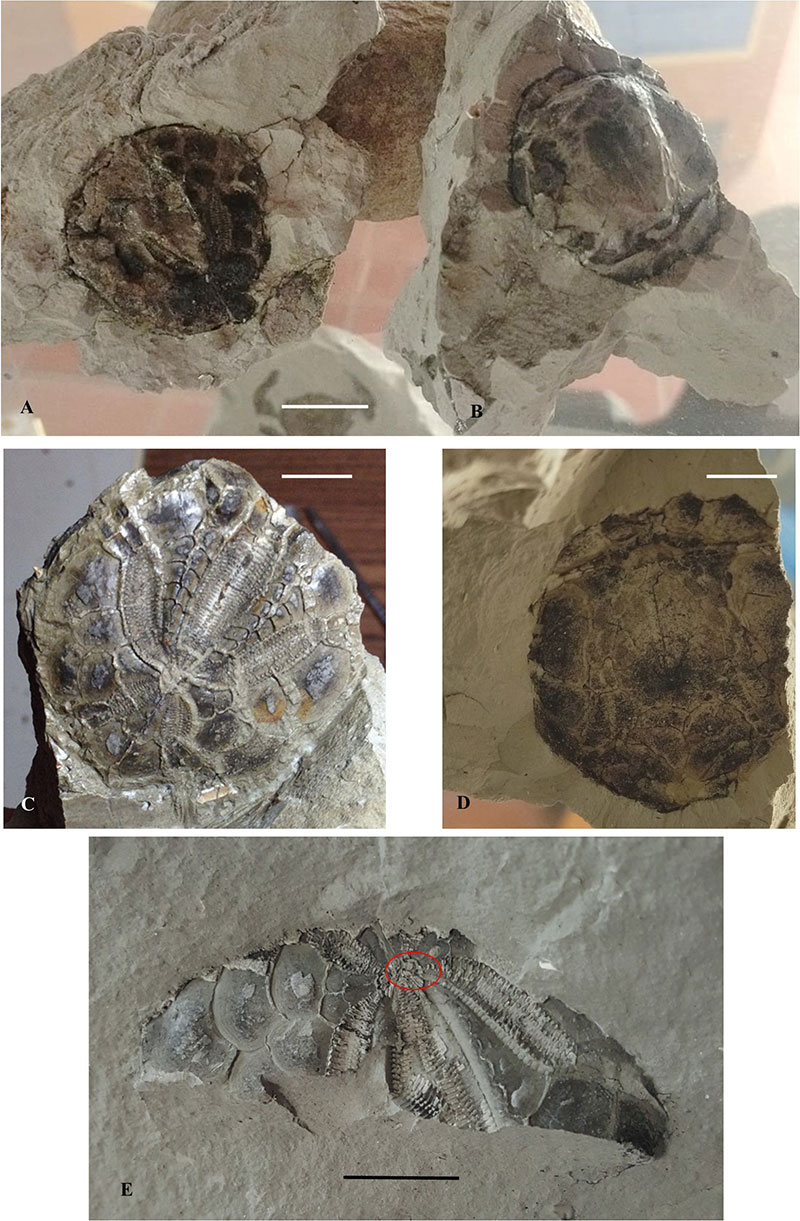
FIGURE 5. A) Plan view across the cetacean excavation surface of 2016 at Bargiano, each grid section represents one square meter (modified after Baldanza et al., 2018). The red star indicates the position of fish skeleton. B) The disarticulated but not dispersed fish skeleton of Hoplobrotula orcianensis with otoliths, and vertebrae. Scale bar: 5 cm.
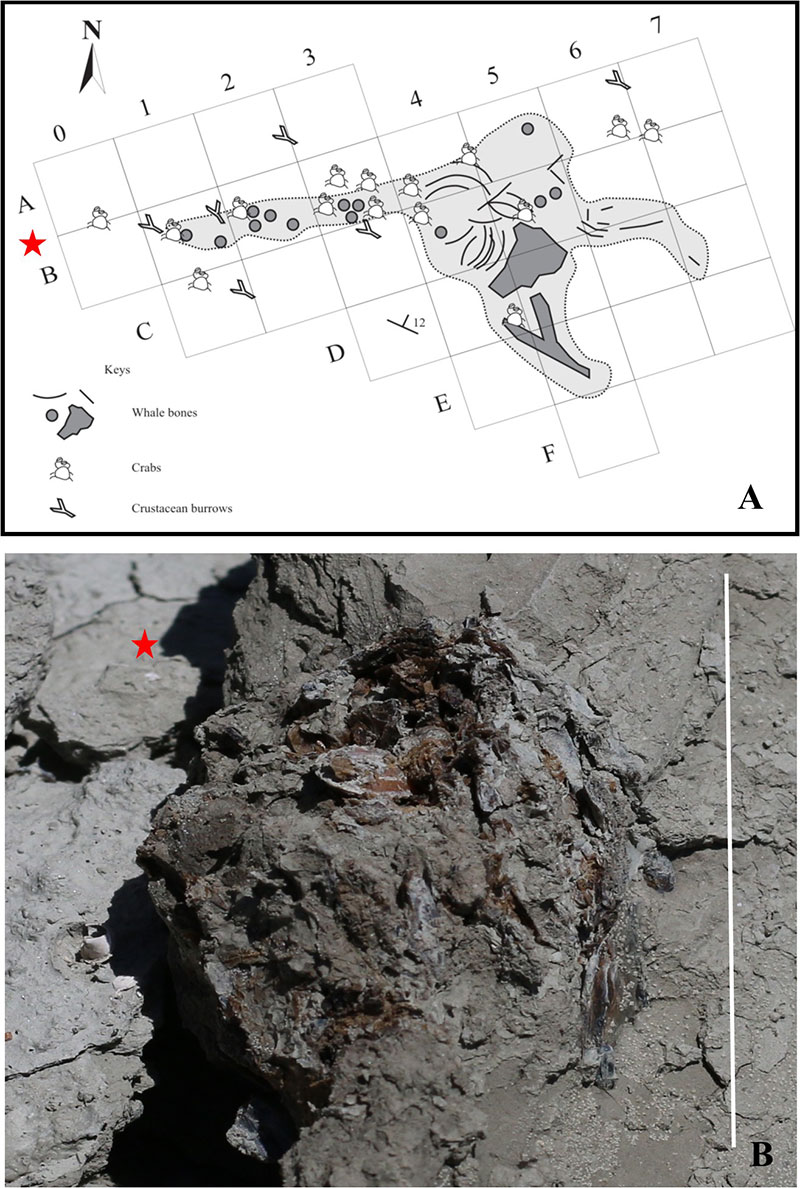
FIGURE 6. Fish vertebrae and otoliths of Hoplobrotula orcianensis. A-C) Fish vertebral centra in lateral view, scale bars: 3.0 mm (A, B) and 2.5 mm (C); D) Vertebral centra in frontal view, scale bar: 2.5 mm (MUAL 55); E, F) Otoliths of Hoplobrotula orcianensis showing supposed female morphologies, MUAL 56-57 scale bars: 2.0 mm (E), and 2.5 mm (F).
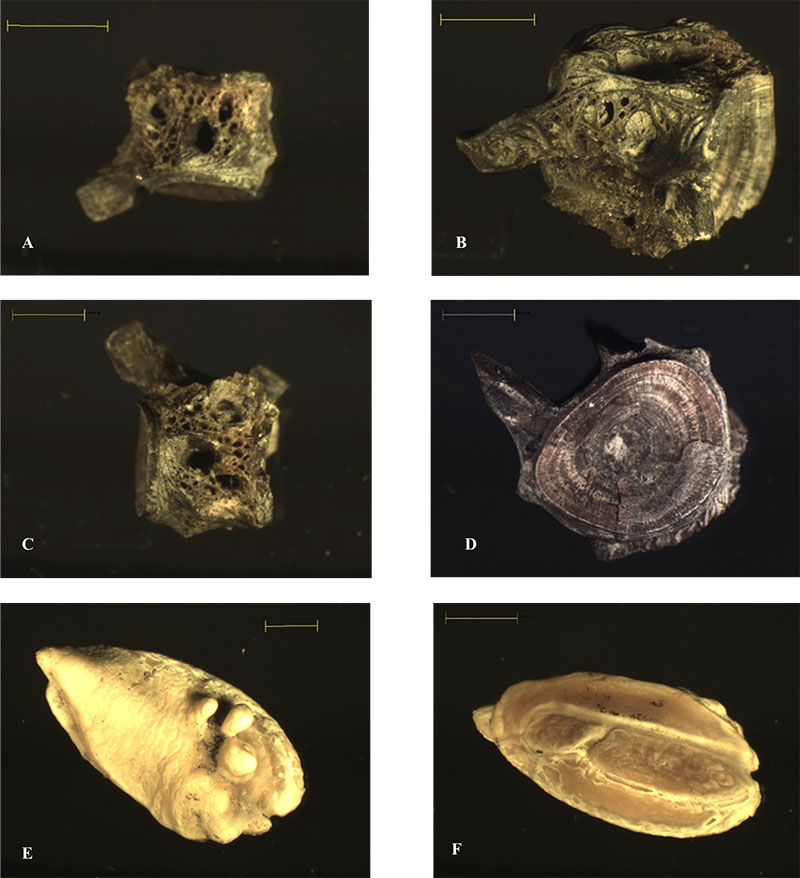
FIGURE 7. Fish Otoliths of Montemoro. A) distal sides of four specimens of Argyrosomus regius, (MUAL MM 58-61), scale bar: 2 cm; B-D) Proximal - lateral- and distal sides of large otoliths of Argyrosomus regius. Scale bar (grid): 1 cm.
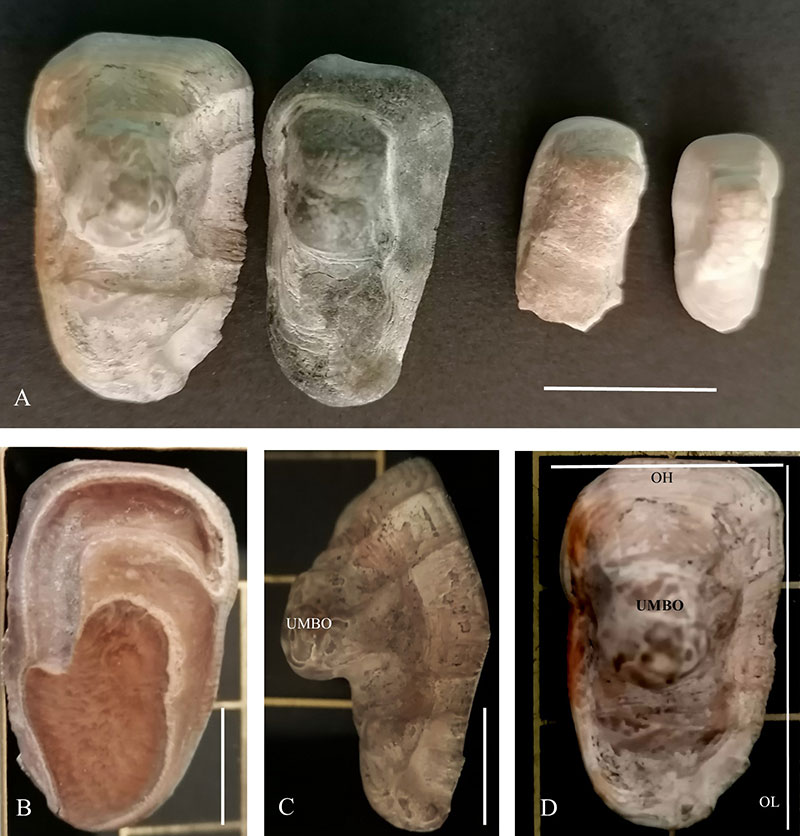
FIGURE 8. Shark teeth. A) and D) Cosmopolitodus hastalis (labial views, upper jaw). Specimens MUAL MM1 and MM2. B) C. hastalis (lingual view, upper jaw). Specimen BAR1. C) same specimen (labial view, upper jaw). L, M) Carcharodon carcharias, labial and lingual views (upper jaw). Specimen MUAL MM3. J) Myliobatis aquila tooth plaque. H) Hexanchus griseus, tooth of lower jaw (MUAL MM12); I) H. griseus, tooth of upper jaw (MUAL MM13). E-G) Carcharias taurus three specimens of lower jaw in lateral, labial and lingual views respectively. To note the lingual and groove bisect of root protuberance and one of the two laterals denticle: specimens MUAL MM4, MM5, MM6. K) C. taurus, tooth of upper jaw, specimen MUAL MM7. N, O) Carcharhinus longimanus, teeth of upper jaw; specimens MUAL MM8, MM9. P, Q) C. longimanus, teeth of lower jaw; specimens MUAL MM10, MM11. All scale bars: 1 cm.
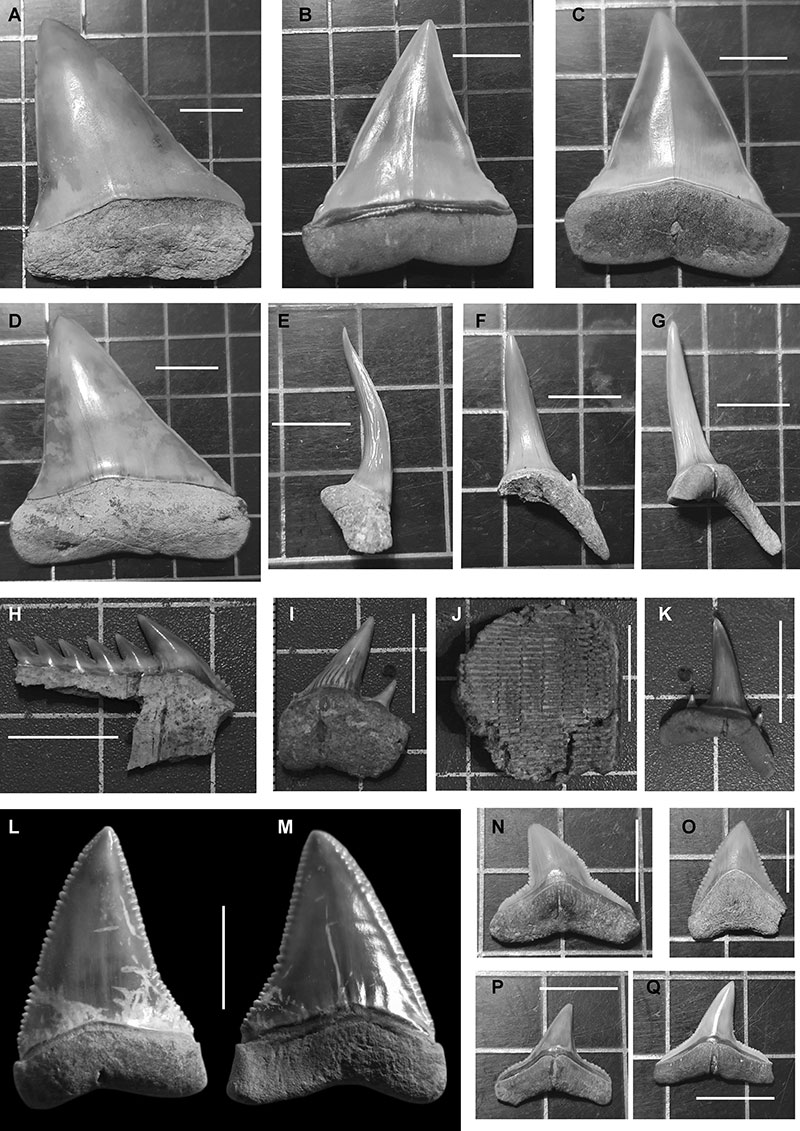
FIGURE 9. Burrows of type 1: A) Upper portion of slab (B) with isolate fragment of Bichordites (black arrow) recovered very close to the whale skeleton; B) Clay slab (lower portion) with horizontal structures, parallel to bedding, with rugose, irregular surfaces and three (white stars) vertical shafts. C) Bichordites sp. with evident meniscate backfill; D) probable shaft of Thalassinoides sp.
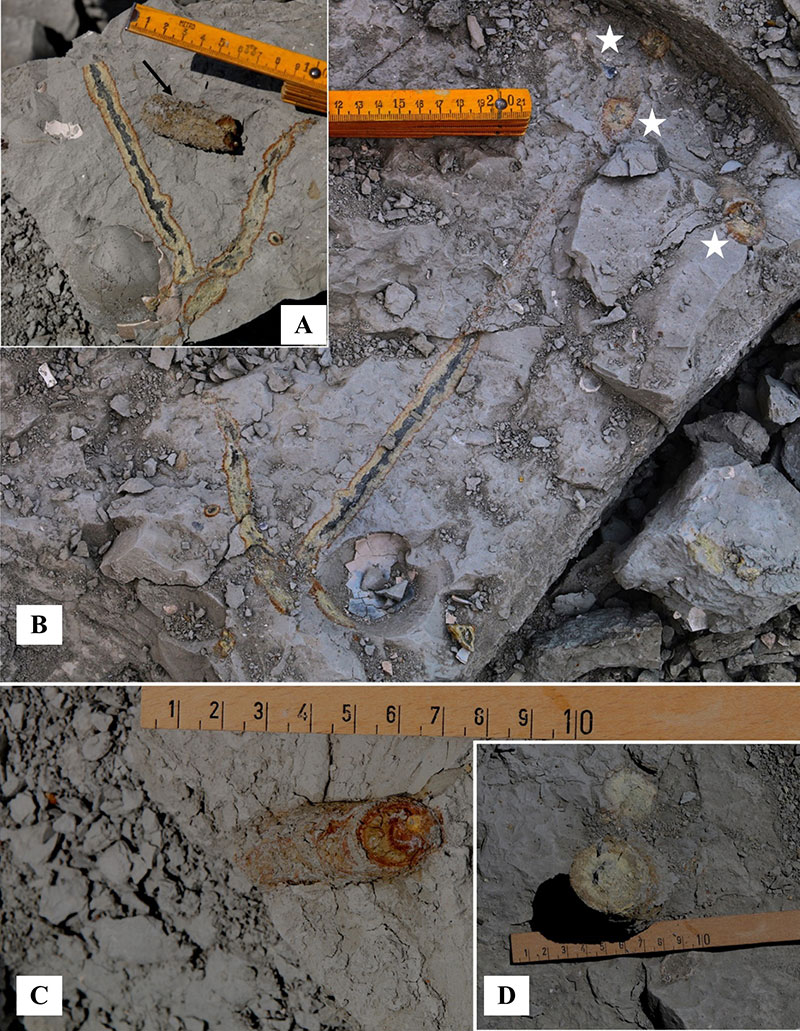
FIGURE 10. Burrows of type 1: horizontal burrow. A) Horizontal strata surface with semi covered trace fossil, scale bar: 5 cm; B) burrow of 10A, extracted from clay sediment and polished, to note the gentle meniscate structure and C) details of the rugose burrow surface with little protuberances produced by echinoid spines. All characters pertaining to genus Bichordites.

FIGURE 11. Holothuroid traces. A) Artichnus gibertii. B) Artichnus isp., scale bar: 1 cm. C) chain of probable feces, scale bar: 1 cm. D) details of chain made by fecal product of Holothuroids; E) two small holothuroids (?), scale bar: 0.5 cm.
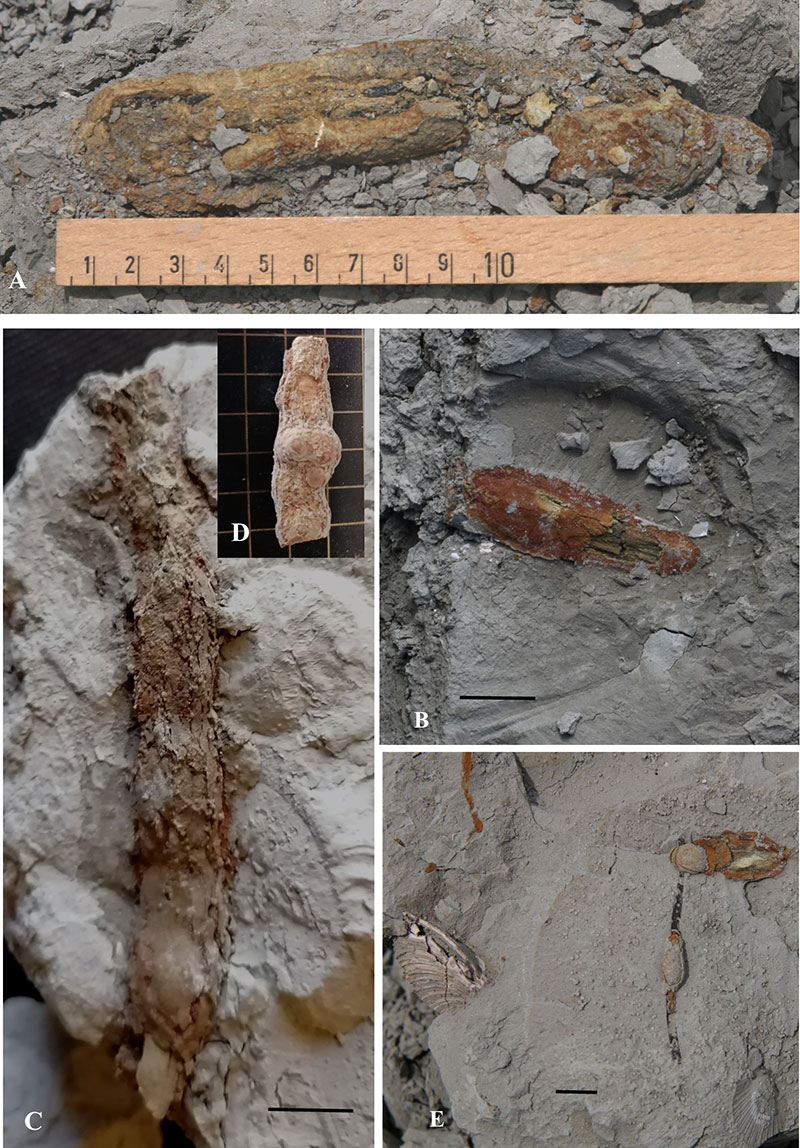
FIGURE 12. Selected mollusks from Bargiano site: A) Ostrea lamellosa grown attached to maxillary bone, as it cropped out on the field surface before the digging of whale skeleton, scale bar: 10 cm; B) Mechanical accumulation due to surface washout from rainfall. Abundant fragments of bivalves together with gastropod shells (Turritella sp, Dentalium sp., Euspira sp.), scale bar: 5 cm; C) Venus multilamella and Megaxinus incrassatus (black arrows) between the ribs, scale bar: 10 cm; D) Megaxinus incrassatus between vertebral process, scale bar: 5cm; E) Myrthea spinifera, Venus sp. (black and white arrows) between the ribs and vertebrae, scale bar: 5 cm; F) Large specimens (black arrows) of Ostrea lamellosa attached to the maxillary bone, found during restoration phase. Scale bar:10 cm.
